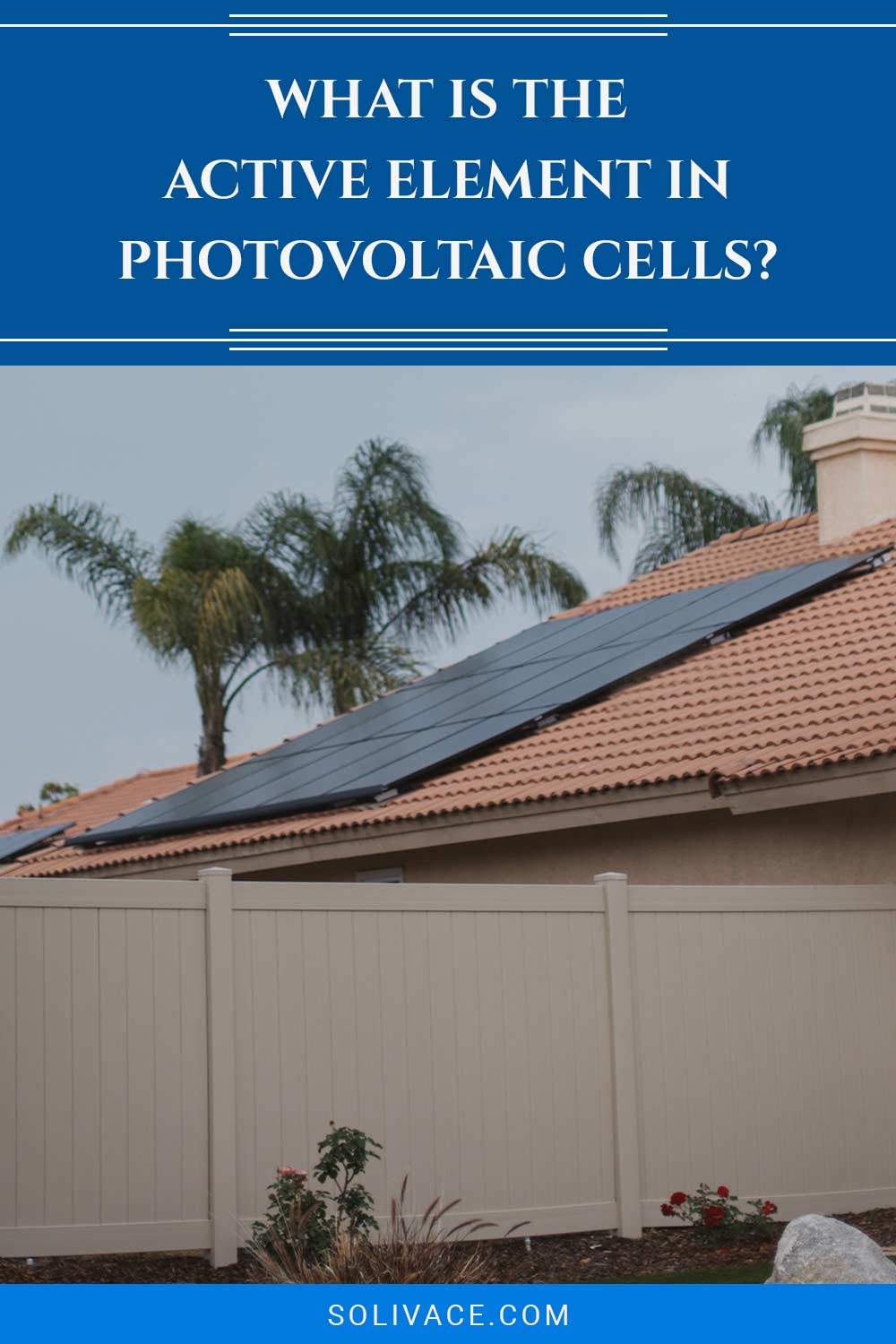What Is The Active Element In Photovoltaic Cells?
We may earn commissions for purchases made through links on our site. Learn more on our about us page.
There are three varieties of solar capturing panels: the thin layer, the monocrystalline, and the polycrystalline.
The one common element that is the most active amongst all molecules, no matter the type of panel made, will be silicon which makes up about ninety-five percent of the panel sold.
Another way to think about this would be the movement of electrons and photon molecules, the natural element from the sun that becomes a catalyst for the p-n junction action that creates storable energy.
In the smallest of settings, down to the atoms, electrons will be the most active element in this energy exchange.

What is a Photovoltaic Cell Made of?
By far, the most prevalent and most popular choice for materials when producing solar panels is silicon, which makes up around ninety-five percent of the panel setups sold (as of the end of 2022).
However, new thin-film photovoltaic materials can be applied to glass, metal, and plastic and contain newer technology conductors.
Today’s most popular materials will be cadmium telluride (CdTe) and copper indium gallium diselenide (CIGS). The issue with these thin-film products is the complexity and expense of combining four elements, making it an ‘unprofitable’ item.
What Elements Make up the Layers of a Photovoltaic cell?
When looking into solar panel technology, there will be different designs from different manufacturers, all of which claim to have the best and most efficient construction.
For the purposes of this article, we will talk about the standard structure of ninety-five percent of the modules that have been sold so far.
The top-most layer will be a transparent Anodized aluminum frame, a highly transparent tempered glass, the encapsulant material (EVA), the photovoltaic solar cells, an additional encapsulant layer, an insulating back sheet, and a junction box.
This being the basic design, keep in mind new technologies are being developed as you read this article.
What is the Active Area of a Solar Cell?
There are going to be a pair of ways to look at this; from the macro level, the most active part will be in the heart of the panel at the photovoltaic solar cell level.
This is where the sunlight interacts with the silicon (ninety-five percent of modules) and generates the p-n junction interaction.
At the atomic level, the most active area will be in the atom’s outer shells, where the valence electrons will be jumping back and forth between the inner and outer shell rings.
This type of interaction is where the sun’s energy is absorbed and sent into the vacant space within the batteries.
How Does it Work?
The basic principle behind the collection and storage of the sun’s free energy is fairly simple.
As the solar energy reaches the earth, it comes in the form of photons which then collides with the photovoltaic solar cell layer creating heat which then is converted into usable energy, and stored in the batteries below.
As the photons interact with the solar panel, a p-n junction is created in which the energy from the sun causes the negatively charged photons to change into an excited state, causing the electrons to jump about the atom rings.
How Long does the Active Element Last?
Another reason for the popularity of silicon is the durability that comes with using it as a material. For example, solar panels made with a silicon base will be given an average lifespan of twenty-five years, in which a warranty can reasonably cover a collection station.
As far as staying in an active state, the silicon and other materials included occur where there are enough solar photonic energy beams striking the panel at one time.
There will even be certain lunar conditions that will allow for a panel to collect power, even in the nighttime hours, depending on the intensity of the light.
Final Thoughts on What is the Active Element in Photovoltaic cells
There are going to be newer and better designs for solar panels in the coming years, some of which might make silicon technology seem obsolete.
But, as for now, the durability and efficiency of silicon-based photovoltaic solar cell capabilities will be the best modules to use for the time being.
If you are a homeowner, look into the new technology roofing tiles that are coming out, Tesla is pioneering this tech.
On the other hand, suppose you are a company or an energy-producing investor. In that case, there is hardly a better fit for a solar farm than the silicon panels already utilized by businesses.



Leave a Reply
You must be logged in to post a comment.